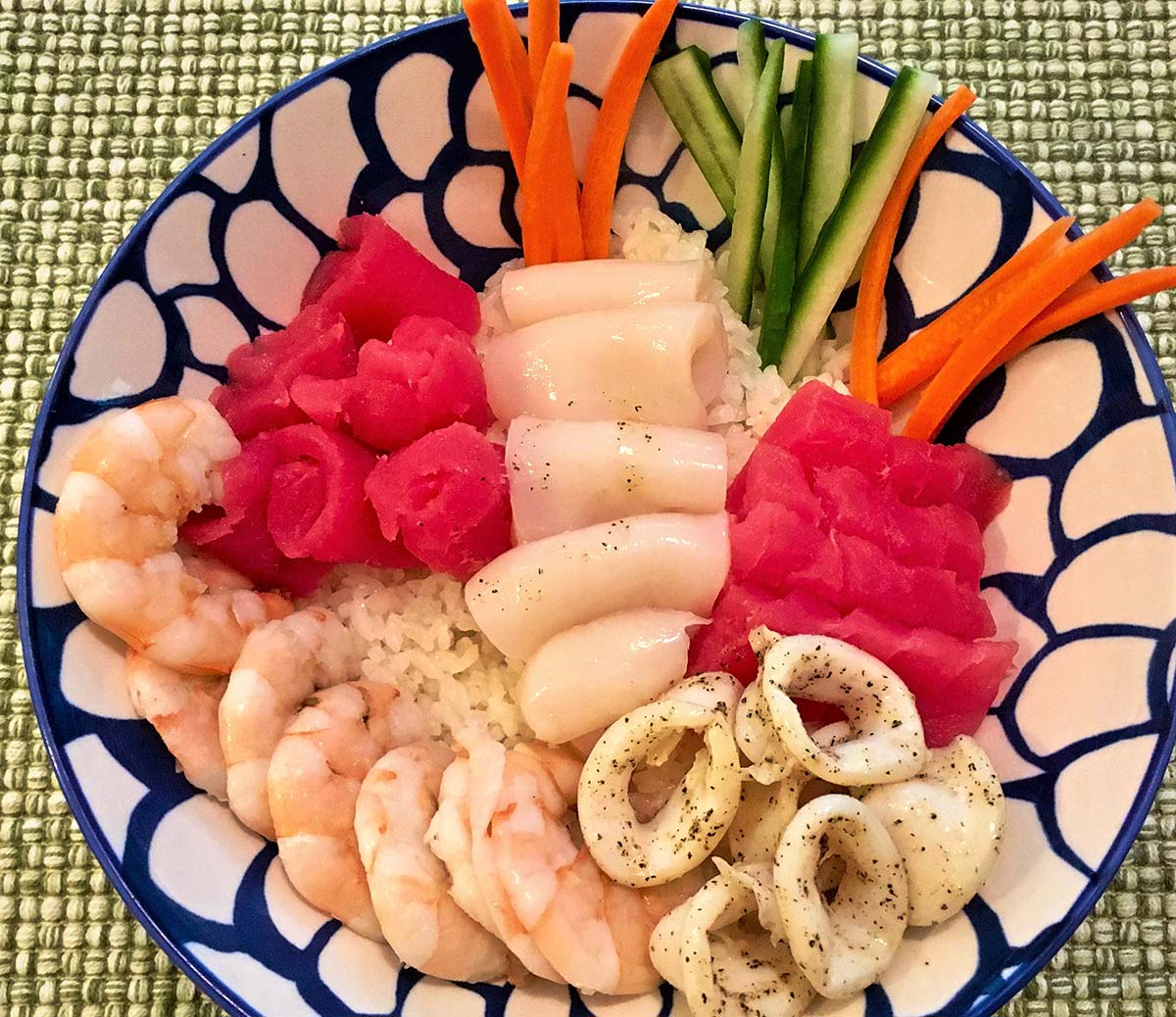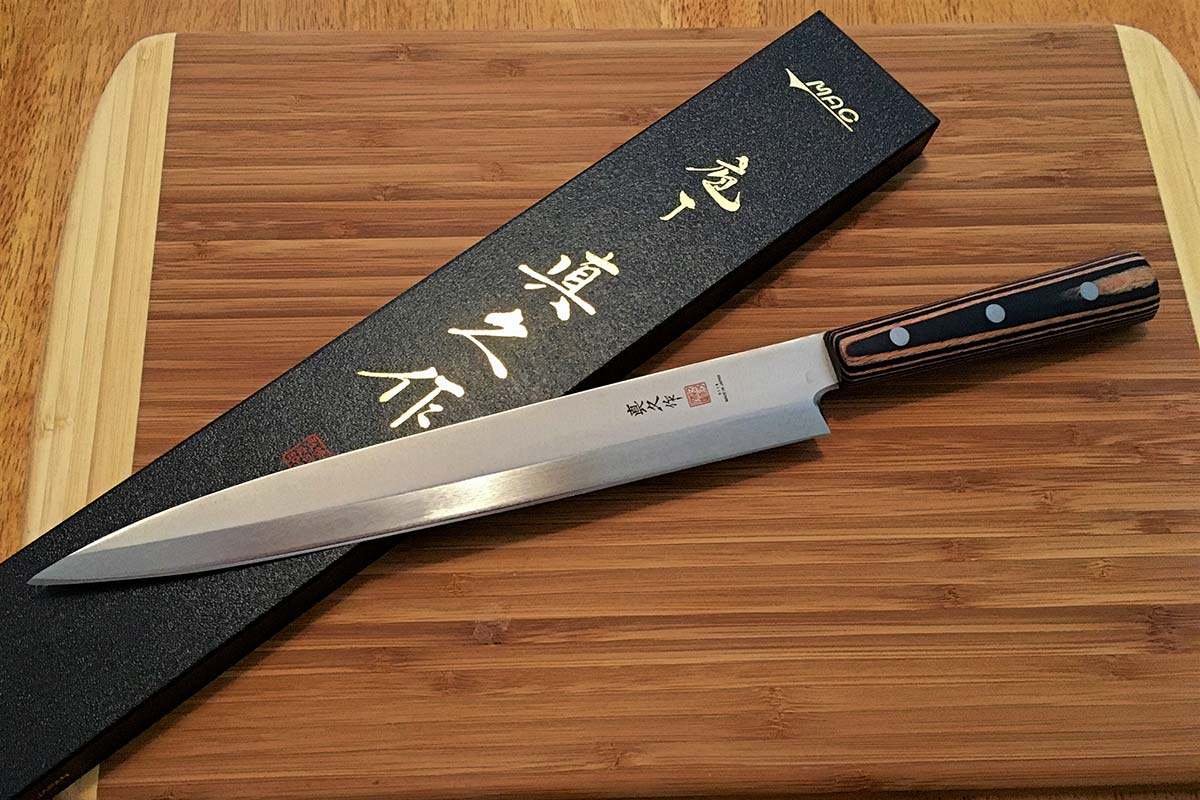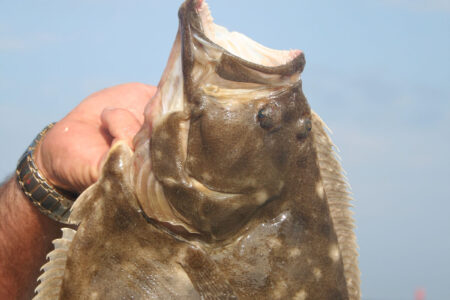
An introduction to preparing your own sushi at home.
Like most anglers, I enjoy frequent meals of fish and other seafood. Yet, I must admit that the first time I was introduced to raw fish in the form of Japanese sushi I was a bit hesitant to give it a try. Up to that point all the fish I’d eaten had been cooked. But Italian-American grandma’s wisdom prevailed, as did the tag line of that old 70s TV commercial: “Try it, you’ll like it.” And like it I did, so much so that over time I have grown to make some variety of raw fish a staple food of my weekly diet.
For many years, this fish fix was satisfied by dining at Asian restaurants or from takeout establishments. However, a much broader interest in raw fish preparation developed about a dozen years ago with me trying my hand at homemade sushi. At first, the whole idea was a bit daunting, but I jumped in with both feet, and I learned as much as I could about the subject. I sourced the Internet for history, techniques, recipes, how-to videos, read books and even took a few cooking lessons. The net result is that I now prepare and consume my own sushi, sashimi and crudo on a regular basis.

Origins And Facts
One of the early lessons learned along this new path of culinary discovery was that there is a considerable misunderstanding about the consumption of raw fish and exactly what sushi is. Some classify all sliced, uncooked fish as sushi. That is absolutely incorrect. Sushi is indeed made with raw fish or other seafood as a primary component. But that fish is placed atop a small molded bed of cooked and seasoned short-grain rice. The rice is typically seasoned with vinegar, salt and sugar or some sweetener substitute like Mirin—an umami-rich rice wine used as a food flavoring. The combination of the sliced fish and rice are together referred to as Nigiri sushi. The word Nigiri comes from the Japanese Nigirizushi, which translates as “hand-pressed sushi.”
And slices of raw fish served alone without the rice accompaniment are considered sashimi. Taking this a step further, the Italian form of raw fish cuisine is known as crudo. Although crudo in many respects is similar to sashimi, it differs in that a sparing amount of olive oil and Italian condiments are added to complement the flavor of the fish. Tartare and ceviche are also considered as raw fish preparations. Whether involved with sushi, sashimi or crudo, a wide variety of fish, shellfish, crustaceans and other seafood can be used as the principal ingredients. That said, sushi can also incorporate other food groups in preparation and presentation. But sushi’s identity is most closely aligned with fish.

China is credited with originating the first form of sushi by fermenting fish in cooked rice. Japanese sushi dates back to the 8th century when it was developed as a means to preserve fish in rice that had been blended with fermented vinegar. When it was time to consume the fish, the rice was discarded and the fish eaten. Eventually, someone figured out that rice enhanced the flavor of the fish and as a result, the earliest form of sushi originated. Pressed sushi, made in wooden presses, followed as a form of “lunch box” food for workers, and over time that evolved into the popular and most recognizable Nigiri sushi that is enjoyed today.
The most common fish species used in the preparation of raw cuisine are typically of the saltwater variety. While many different species of fish and other seafood are prepared raw, some of the most familiar are bluefin and yellowfin tuna, mackerel, yellowtail, eel, salmon, shrimp, squid, sea urchin, octopus, scallops, bonito and fluke. Other species of seafood are also used, with the chef’s creativity being the only limitation.
But one word of caution is to never eat freshwater fish raw since they carry the greatest risk of transmitting bacteria and parasites. This leads to another misconception about consuming uncooked seafood which is the best fish for sushi is always fresh from the water.

A Necessary Freeze
You may have noticed when dining at sushi restaurants that serve raw fish, the menu contains an asterisked FDA advisory that reads somewhat like this: Consuming raw or undercooked meats, fish, shellfish or fresh eggs may increase your risk of foodborne illnesses, especially if you have certain medical conditions. These items contain raw or undercooked meat, shellfish or fish.
| DEEP 1FREEZE |
| Freshness of flesh is of utmost importance, but the fact of the matter is that “sushi grade” quality has less to do with just out of the water freshness and more to do with the amount of high intensity freezing the fish undergoes. If fish is to be served in restaurants or sold in stores as “sushi grade” it needs to have been previously frozen to kill parasites. To minimize the health risk associated with parasites the Food and Drug Administration has recommended that at a minimum sushi-grade fish must be frozen for a at least one week at a temperature of minus 4 degrees. In many instances, fish are commercially frozen at much lower temperatures between minus 10 to minus 70 degrees Fahrenheit. That level of freezing is well beyond what the average home refrigerator can achieve. Freezing fish to those temperatures requires heavy-duty commercial equipment. |
The probabilities of encountering parasites in raw fish vary with the species. Ocean roaming pelagic species akin to those within the tuna and mackerel families carry the least risk of parasites while inshore and bottom-dwelling fish have higher risks. Shellfish like clams, oysters and scallops are eaten regularly at raw bars but can also come with some jeopardy of bacterial infection. Anadromous species of fish like salmon and striped bass that spend some of their lives in saltwater and spawn in freshwater also hold the potential for parasites.
The caveat for anyone who contemplates preparing and eating any form of raw fish at home is to make certain that the fish used has been previously frozen consistent with the recommendations of the FDA to kill any possible parasites, worms or bacteria. While the odds are in your favor for having very positive and enjoyable sushi experiences, it pays to be precautionary. That is why one of the best sources for acquiring quality, sushi-grade fish is a reputable fishmonger. You want to find someone who will readily and reliably tell you that certain fish are or are not sushi grade.

From Rod To Table
Proper handling of rod-caught fish will ensure freshness and suitability of fish that are destined for the table as sushi, sashimi or crudo. Fish like tuna, bonito and mackerel need to be bled immediately after being caught and then packed in ice. And remember the FDA guidance regarding the recommended standards of freezing fish before consumption. When actually preparing fish for purposes of slicing try to limit the amount of handling time. The warmer the fish gets the more conducive the conditions become for bacteria to develop. Always use a clean surface when filleting or slicing fish and wipe any bits of flesh from the cutting board. While it might be stating the obvious, never slice fish that are to be eaten on any surface used to cut bait, since that is an environment which supports the rapid growth of bacteria.
Once a quality piece of fish has been obtained there are a few other things the home chef needs to transform that fish into a delectable portion of sushi, sashimi or crudo. For starters, a sharp knife is essential for appropriately slicing fish into the desired size and shape. The knife typically used by Japanese sushi chefs is a yanagiba. This willow leaf-shaped blade has a single beveled edge that enables the knife to efficiently slice through fish. A double-beveled western-style chef’s knife or slicing knife can also be used. Just make certain the knives are sharp, and always pull the blade through the slice rather than saw the fish as one would when slicing bread.

| MAKING SUSHI RICE |
| Japan, an apprentice sushi chef working under a master chef can spend years just learning to perfect rice—but fear not—making a good batch of sushi rice is well within reach of the amateur angler chef. Whether you use a rice maker or use a pot filled with water, following a few simple guidelines can do wonders for your rice. It is best to use short-grain rice and to rinse it under cold water to remove excess starch. Wash the rice until the water runs clear. A good rule of thumb for cooking sushi rice is 1-1/2 cups of rice to 2 cups of water. Do the math up or down depending on how much rice you choose to make. Once the rice is cooked, mix in a combination of rice vinegar, sugar or mirin, and salt. The rice takes on a tacky consistency and can then be molded into the form upon which the sliced fish is placed. |
Sashimi is typically sliced straight down, while cuts for Nigiri sushi are done on an angled bias against the grain of the fish. Always be certain to exercise caution with sharp knives and pay attention to each cut that you make. Other items that the angler-chef might want to have in his or her kitchen are: a fillet knife; fish scaler; cutting board; bamboo rolling mat for sushi rolls; and a wooden bowl for preparing the sushi rice.
As you become more advanced with preparing homemade sushi and other raw fish, other utensils and gadgets might be of interest. It also pays to read a good book or two about sushi preparation and recipes, and to check out some of the numerous Internet videos on the subject. Fishing and sushi are both addictive pursuits. Combine them and you’ll broaden the pleasures of both your angling and dining experiences.




